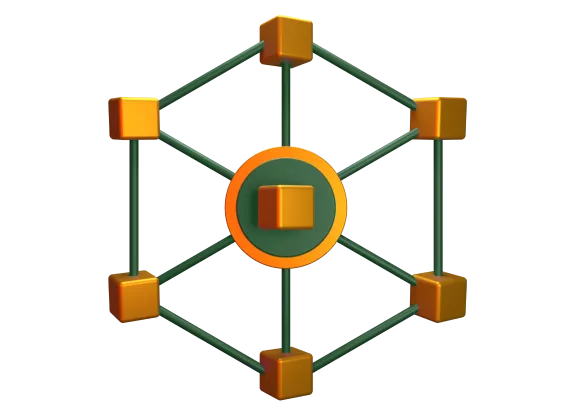Is it worth using a private blog network (PBN) for building links in 2025?
Link mass can be built in various ways. In addition to classic solutions, there are more modern ones. One of them is the use of a private blog network, the features and capabilities of which are worth considering in more detail.

What is a private blog network (PBN)?
Andflint reminds us that the term PBN refers to a collection of individual sites that belong to a person or organization. This can be a blog network, which is the most common PBN format. It is created to generate links for the main domain. It is important to understand how effective this solution is. When searching using Google algorithms, the relevance and authority of sources are taken into account. Authority means reliability, which is based on the number and quality of links pointing to the main domain. A large number of high-quality links leads to a sharp increase in the authority of the portal, so the ranking will be more effective in the future.

Let’s look at the use of PBN using the example of promoting a law firm domain. To launch a blog network, you should purchase domains related to legal practice. Then Andflint recommends developing a content plan for these resources. Then you will only need to link to the main resource, which generates income. This approach makes it possible to abandon the usual strategies for accumulating link mass, which require a lot of time and patience.
Are Private Blog Networks (PBNs) white hat or black hat?
The quality issue is key when it comes to optimization. The reader needs to receive quality content, so the links must be quality and natural. This is where the question arises about whether PBN is a permitted tool for promotion. If the network is created to manipulate the rating, then this is a violation of the current Google policy. Accordingly, sanctions from the search network should be expected.
There is a method in which PBN will be considered a completely organic way of promotion. It is necessary to create several platforms and effectively develop them, filling them with quality and interesting content. In this case, the links posted on these portals will not contradict the current Google policy.
Google’s repression of PBN in 2014
Since the method of increasing the link mass through PBN very quickly gained immense popularity, it is not surprising that the search engine took measures to combat blog networks. The campaign against PBN began in 2014 and continues today. Those suspected of violations receive manual sanctions, which make the portal less visible within the search engine. Andflint notes that the main reason for sanctions is usually the low quality of content posted on the PBN.
There are several ways to protect yourself from penalties. They usually apply to networks that are directly related to the main domain. It is enough to simply study the public owners of each site. If they are the same person, then the sanctions will come immediately. This can be avoided by:
- Using different registration organizations. Sites should not fall under one registration.
- Using a variety of links. If domains constantly point to each other and nothing more, this will be a signal for search bots.
- Developing each project as an independent unit. Each site should be autonomous, as indicated by the features of its visuals and content. Even if the topic is narrow, with the right approach it will not be difficult to achieve this.
The problem of Google’s repressions remains solvable if you approach the construction of a PBN wisely.
The problem of return on investment in a PBN
Project owners invariably have questions about how successfully they will be able to recoup their investments in the project. To do this, you need to calculate all the costs required to build a PBN. First, you need to purchase domains for each portal. By carefully studying the market, you can find some pretty good deals.
Next, you will need to pay for hosting, which will ensure the round-the-clock operation of the portals. The next step will be website development. You can do it yourself or entrust it to specialists. All that remains is to fill the project with content. You can also create content yourself or order it from experts, for example, from Andflint. Payback when building a PBN is achieved in the long term. To solve problems with profitability, two main approaches are usually used:
- Reducing development costs. To do this, they look for the cheapest domains possible, and also make the content cheaper. It is very important to maintain a balance here so that the quality does not suffer too much.
- Solving multiple tasks with secondary sites. The owner can increase the ROI by assigning several tasks to the hub portals, including generating additional income or implementing one PBN for several projects at once.
As you can see, the issue of ROI can be solved in several ways, but each of them has its pitfalls.
PBN and sustainable strategies
Andflint reminds us of the possibility of using more sustainable strategies to achieve this goal. For example, instead of investing in the development of a separate blog network, you can improve the quality of the content posted on the main portal. Another reasonable solution may be to establish relationships with external partners, on whose sites you can regularly post guest posts.
Advantages of PBN
If we talk about the strengths of PBN, then the following points should be highlighted:
- the ability to directly control the sites on which links are posted;
- significant time savings compared to other link-building strategies.
These are the features that make the method attractive to project owners.
PBN as part of a balanced link-building strategy
One of the most logical solutions would be to include PBN in a balanced strategy. This will diversify link sources, reducing the likelihood of a ban from the search engine. Balanced tactics allow you to achieve better results since there is always an opportunity to compensate for the shortcomings of one of the tools at the expense of another.
Expiring Domains and Replacing Broken Links
One alternative to using PBNs is to buy expiring domains. They already have the authority required for optimization. They can fit perfectly into the PBN system, reducing the costs of development and development. At the same time, it should be taken into account that the cost of such projects is usually an order of magnitude higher than in the case of new ones.
Bottom line: are PBNs worth it?
If we are talking about an average optimizer, then PBNs are not worth the attention and time. Working with them is quite difficult, and any mistakes can lead to the most unpleasant consequences. It is better to direct your efforts and budget to the implementation of sustainable strategies, including improving the quality of content or finding reliable portals for placing links. At the same time, PBNs are not completely useless. Their benefits can be used in moderation to improve your own company’s performance. But you must always be careful and create high-quality content.

